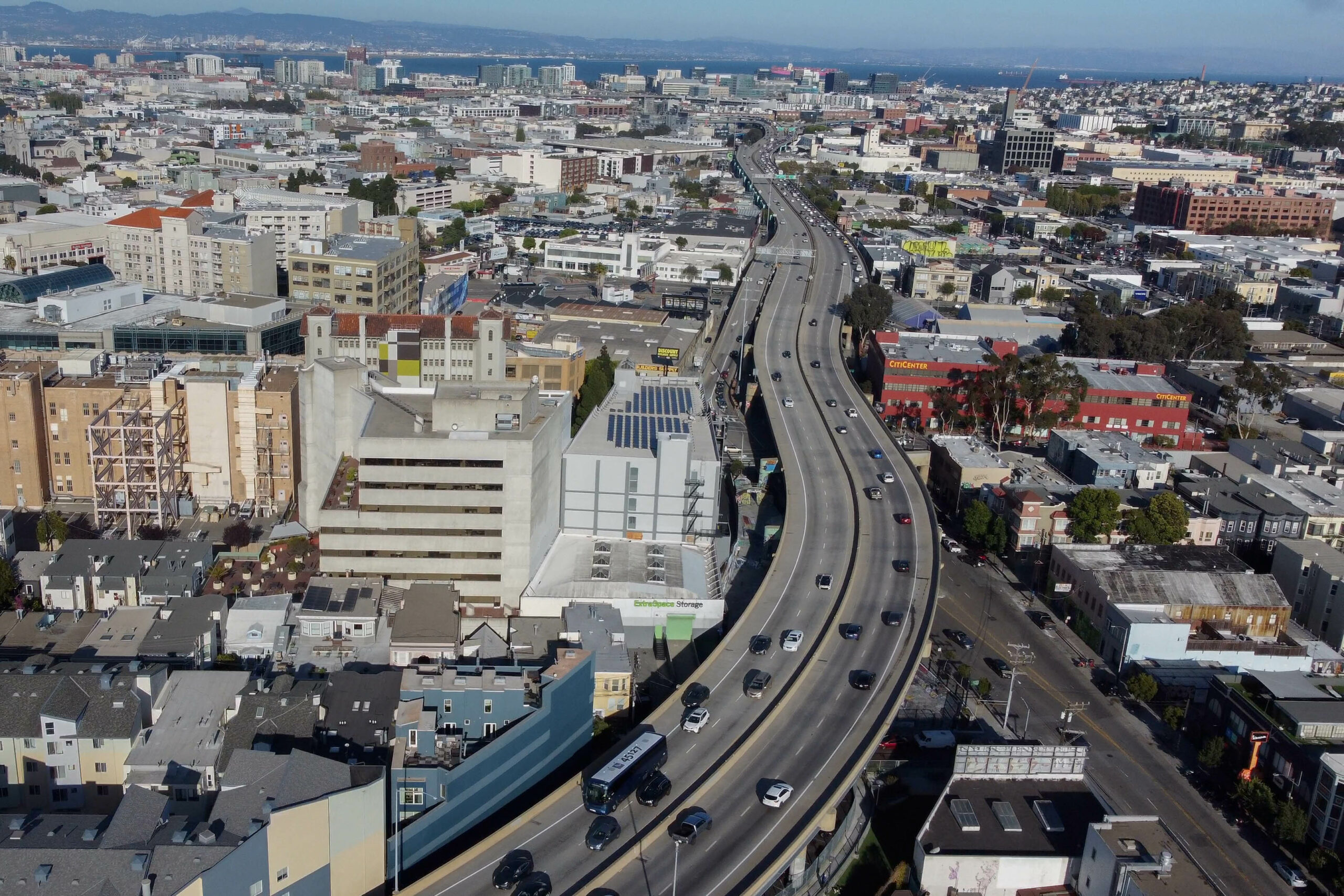Whichever direction San Francisco goes with the Central Freeway, a coalition of community groups wants to steer the conversation.
More than 100 organizations—the vast majority of which are community-serving nonprofits, along with the several cultural districts—sent a letter to the Planning Department and city officials asking that they be put at the center of any and all actions made in regard to the 1.2-mile section of elevated freeway, which forms the boundary between SoMa and the Mission.
“The discussions, direction and decisions about the Central Freeway must come from our communities that will be most affected,” the letter reads.
Much of the Central Freeway was damaged beyond repair by the 1989 Loma Prieta Earthquake. The land beneath the section north of Market Street has been redeveloped into housing and Octavia Boulevard while the remainder south of Market Street was repaired.
A budding movement to remove the freeway and open additional land up for redevelopment has emerged this year, with a new group dedicated to the effort along with an architecture firm sharing a vision for the redevelopment. Their effort was boosted last month when state Sen. Scott Wiener sent a letter to the California Department of Transportation (Caltrans), which is responsible for the state’s highways, requesting a study for removing the freeway.
Caltrans’s executive team is still drafting a letter in response to Wiener, according to a spokesperson.
The new ad hoc group of many powerful neighborhood-based organizations is not asking city officials to convene a meeting yet, Calle 24 Latino Cultural District’s Erick Arguello said. They want the conversation to start from the beginning so the voices of BIPOC community members are at its center to properly factor in race and equity.
“There should be no decisions unless the community is leading them—whatever they may be,” Arguello told The Standard. “There might be more later on, but the community needs to decide.”
The Planning Department hasn’t yet done any meaningful engagement on freeway removal and is eager for Caltrans’ response to Wiener, according to its chief of staff, Dan Sider.
“We wholeheartedly agree that impacted communities need to be a defining part of this conversation—and they will be,” he said.
The Standard uncovered a 2005 provision in San Francisco’s General Plan that requires that the city examine the community impact of removing the elevated highway connecting U.S. 101 to Market Street. But the study was never done.
Daniel Owens, a Mission neighborhood resident leading the Vision Blvd campaign to remove the freeway, said there is a long legacy of infrastructure that carved up, polluted and blighted low-income marginalized BIPOC communities. He welcomed the inclusion of more voices in the mix.
“This is a good thing, and we look forward to continuing dialogue,” he said.
San Francisco State geography professor Jason Henderson was active in the redevelopment of the section of the Central Freeway north of Market Street and wrote a chapter about it in his book Street Fight.
“There is a well-oiled and well-funded neoliberal side to freeway removal that centers on market-rate housing, and there’s reason to be concerned,” Henderson said of the letter. “But the elevated road will come down, either by tectonics or by policy.”
Henderson suggested that the progessive left develop a transportation and land use vision that reflects climate justice, affordability and green transit.
“This post-pandemic moment and uncertainty about the future of market-rate development in Downtown and central SF requires it,” he said.
Tom Radulovich, founder of Livable City, one of a dozen groups that co-signed Wiener’s letter to Caltrans, said it’s time to have a plan for when the freeway reaches the end of its useful life that addresses the connected questions of transit, land use, environment, health and cost in an integrated way.
“That conversation should be as inclusive as possible—inclusive of the people affected by the freeway, inclusive of our values and concerns and inclusive of well-vetted alternatives,” Radulovich said. “Unfortunately, the city government hasn’t started the necessary public conversation.”
